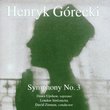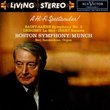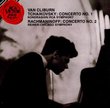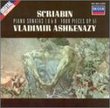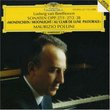| All Artists: Harry Nicoll, Michael Nyman Band Title: Facing Goya: An Opera in Four Acts (libretto by Victoria Hardie) Members Wishing: 0 Total Copies: 0 Label: Elektra / Wea Release Date: 11/26/2002 Genre: Classical Style: Opera & Classical Vocal Number of Discs: 2 SwapaCD Credits: 2 UPC: 809274534224 |
Search - Harry Nicoll, Michael Nyman Band :: Facing Goya: An Opera in Four Acts (libretto by Victoria Hardie)
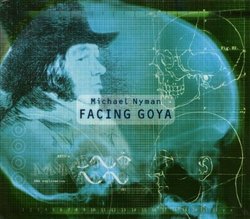 | Harry Nicoll, Michael Nyman Band Facing Goya: An Opera in Four Acts (libretto by Victoria Hardie) Genre: Classical
The provocative new opera takes the listener on a fantastical journey into the dark worlds of racist stereotyping, gene therapy and cloning. Standard double jewel case and booklet housed in a slipcase. Warner. 2002. |
Larger Image |
CD DetailsSynopsis
Album Description The provocative new opera takes the listener on a fantastical journey into the dark worlds of racist stereotyping, gene therapy and cloning. Standard double jewel case and booklet housed in a slipcase. Warner. 2002. Similarly Requested CDs
|
CD ReviewsAn intense, beautiful and funny new opera 12/10/2002 (5 out of 5 stars) "This opera, to quote to the synopsis: In four acts, dramatises the various attempts, in the past and the present, to measure, isolate and then to own the power of artistic genius (in particular Goya's). The libretto, by Victoria Hardie, conveys this in very powerful fashion and is laced with dark humor. There are a lot of memorable lines throughout, whereas in most operas you forget the words a second later.I think most Nyman fans will find this opera very engaging, especially those that have followed his career from the beginning. For this is Nyman at his most uncompromising and inventive best. The ensemble and vocalists perform unrelentingly throughout. Some criticism I've read is that it's an exhausting and even jarring work over the course of the 4 Acts for this very reason, though I don't agree. To me it's exhilarating. The opera opens with a very high speed and energy level taking very few breaths throughout.Nyman mixes and references a lot of diverse sound worlds including his usual neo-baroque post- minimalism with things like rock music, at least one instance of gospel-like singing, jazz, a pinch of broadway and periodic bursts of atonality; in this way Facing Goya presents a constantly and abruptly changing soundscape, all the while obviously remaining highly repetitive given that this is a Michael Nyman opera. It is a style that was previously best represented in his opera/ballet "Noises,Sounds, and Sweet Airs" but he has taken it a step further here. And much of it is quite comical, especially in sections like "How do I know you know" which has a nice "An Eye for Optical Theory"-esq boisterousness that also reminds me a bit of his first opera "The Man Who Mistook His Wife for a Hat."Great performance by the MNB and all the vocalists as well." Serious but seriously fun Brett Stewart | Madison, WI United States | 01/03/2003 (5 out of 5 stars) "When I first saw this recording, I knew I had to have it. Of all of Nyman's pieces that I enjoy, the ones composed for his Band are the ones I perfer the most, so I was eager to see how they could perform in an opera. When I bought the cd, I didn't have any clue what the opera was about or even who Goya was. As I started listening, though, all of these started to flesh out into an opera that is above all, fun.The plot, like most postmodern opera, is not linearly narrative. An Art Banker is obsessed with finding the missing skull of Goya, and travels through time and space to find it. In Act I, she finds herself in an early 19th century lab, where craniometrists and their assistants, sung by 2 sopranoes, a tenor, and a baritone, are measuring skulls and weighing brains to determine the personality traits of their owners. The scientists begin to argue over whether skulls can really reveal the inner human or if it is simply the randomness and beauty of nature which determines man's abilities. After no luck aquiring the skull, the Art Banker is transported to 1930's Nazi Germany, where she encounters art critics. These critics are determining degenerate art by looking for non-Aryan characteristics. Their techniques are surprising similar to craniometrists, and the parts are sung by the same soloists. Here the narrative flow of the opera really shows, because, although the parts are different, each soloists keeps the same traits as they go from one time to the next; as if history is repeating itself. Again, they argue over the origin of man's beauty and character, and again the Art Banker cannot aquire the skull.The final scene takes place in a genetic lab, where a microbiologist is completing the genetic code of humans. A Chief Executive watches over because he can get great financial gain from her success. The Art Banker arrives to find they have Goya's DNA and are going to clone him. An academic and a doctor argue with the biologist and the executive over who should own DNA, much like in the preceding acts. In Act IV, Goya comes back and eventually has to deal with if he is really his own master or if his life is determined by his DNA, skull, etc.This may seem tedious and perhaps a bit too scientific, but it works, and works well. The music starts off slow, but eventually developes the rhythmic drive that Nyman does so well. The music pulls and twists, but keeps a constant motion that never winds down. Surprisingly, even during some of the darker scenes the music remains cheerful. Like when the first [Nazi] Art Critic in Act 2 sings, "Resemblance to Galton's Copt, Arab, negro, or Jew, tarts, idiots and burglars means you cannot be part of Darwin's stew, when your nose is your fingerprint." Although, the statement is rather hideous, the music, sung by soprano, soars with a sad beauty. There are comical moments as well, as in the beginning of Act 3, the scene starts with the words, "Science is a dance", and the music starts with a psuedo-waltz based on one of the themes.In the introduction on the genesis of Facing Goya, Nyman references his projects, such as the soundtrack to Gattaca, which spawned the opera. Because of this, he has "referenced" the music. At some points in the later acts, you can hear faint shadows of Gattaca's maintheme, like when Goya refuses his DNA.Overall, the opera was simply a lot of fun to listen to. The music, the performance, and liner notes could not be better. I actually learned a lot about the scientists and art (examples are provided through the booklet) mentioned throughout the opera. It would be very hard not to like this opera." For the hardcore Nymanite only K. Braithwaite | inkster, MI USA | 04/08/2004 (5 out of 5 stars) "I love this music, but it wasn't easy. I had to listen to it several times before I warmed up to it. The style is very like that of Nyman's Noises, Sounds and Sweet Airs. It is for hardcore Nyman fans only, but for them it is a treat.If you only know Nyman from The Piano this will be a shock. Everyone I play this for recoils in horror."
|

 Track Listings (13) - Disc #1
Track Listings (13) - Disc #1

